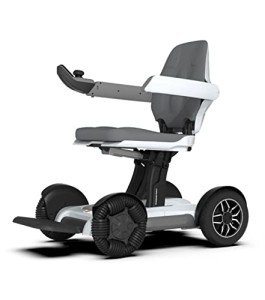How To Save Money On Mobility Scooter UK
페이지 정보
작성자 Kevin 작성일25-11-08 01:09 조회2회 댓글0건관련링크
본문
Exploring the World of Mobility Scooters in the UK
As the UK population ages and the requirement for mobility help ends up being more pronounced, mobility scooters are increasingly recognized as important tools for preserving self-reliance. With numerous models, functions, and guidelines in play, understanding the landscape of mobility scooters can help individuals make notified choices.
In this blog post, we will cover the types of mobility scooters available, essential features to think about, legal policies in the UK, and answer some often asked questions. We will likewise present a comparative table to assist readers in assessing their alternatives.
Types of Mobility Scooters
Mobility scooters been available in various sizes and shapes designed to satisfy the needs of various users. Broadly, they can be categorized into 3 primary classifications:
| Type | Description | Ideal For |
|---|---|---|
| Class 2 Scooters | Restricted to 4mph, can be utilized on pavements and walkways | Urban users and occasional trips |
| Class 3 Scooters | Can take a trip up to 8mph, permitted on roads and created for longer trips | Those needing comprehensive mobility |
| Portable Scooters | Light-weight and disassemblable for practical transportation | Users who travel frequently |
Class 2 Scooters
Class 2 scooters are created mainly for indoor use or short journeys. With an optimal speed of 4mph, they are perfect for users who require support in city environments, shopping mall, or regional parks.
Class 3 Scooters
Class 3 scooters, authorized for road usage, deal greater versatility with greater speed limitations. These scooters appropriate for longer distances, making them perfect for users who seek self-reliance while browsing the neighborhood.
Portable Scooters
For those who frequently take buying a mobility scooter trip or go on vacations, portable scooters can be a lifesaver. These compact designs normally fold up or dismantle easily, allowing users to store them in cars and trucks, trains, or other kinds of transport.
Key Features to Consider
When choosing a mobility scooter, prospective purchasers ought to consider numerous features to guarantee they make the best mobility scooters option. Here are the most vital functions:
Weight Capacity: Each scooter has a weight limitation, so it's necessary to select one that can support the user's weight comfortably.
Variety: Look for scooters that use sufficient battery life to cover the distances you usually take a trip.
Comfort: Features like a luxurious seat, adjustable armrests, and ergonomic controls can enhance the general experience.
Wheels and Suspension: Larger wheels and an excellent suspension system can improve stability and comfort, particularly over irregular surface.
Storage: Additional space for carrying items-- like baskets or under-seat storage-- can be useful for users shopping or on errands.
Portability: If intended for travel, consider the scooter's weight and disassembly features to guarantee it's easy to transport.
| Feature | Value |
|---|---|
| Weight Capacity | Makes sure security and comfort for the user |
| Range | Figures out how far the scooter can travel without recharging |
| Comfort | Improves the user experience and help in long-term use |
| Wheels and Suspension | Impacts the scooter's stability and capability to handle different surfaces |
| Storage | Supplies convenience for carrying individual items throughout travel |
| Mobility | Crucial for users who intend to take the scooter on public transport |
Legal Regulations for Mobility Scooters in the UK
Understanding the legal guidelines surrounding mobility scooter usage is important. Here are some essential points regarding regulations in the UK:
- Registration: Class 3 scooters should be signed up with the DVLA (Driver and Vehicle Licensing Agency) and need to display a registration number.
- Insurance: While it's not necessary to have insurance, it is extremely suggested to secure versus potential liability.
- Driving Restrictions: Class 2 scooters can only be utilized on pavements, while Class 3 scooters can be driven on roadways (albeit at a maximum speed of 8mph).
- Security Requirements: It is mandatory for Class 3 scooters to have specific functions like lights, indicators, and a rear-view mirror for safety.
Often Asked Questions (FAQ)
1. Do I require a license to utilize a mobility scooter in the UK?
No, you do not need a driving license to run a Class 2 or Class 3 buy mobility scooter scooter. However, Class 3 scooters should be signed up with the DVLA.
2. Are mobility scooters enabled on public transportation?
Yes, many public transport alternatives in the UK allow mobility scooters, although some providers may have particular standards relating to size and weight.
3. What should I think about when buying a pre-owned mobility scooter?
When purchasing a second-hand scooter, check its condition thoroughly, examine its battery life, and make sure that it fulfills safety standards.
4. How do I charge my mobility scooter?
Many folding mobility scooters near me scooters feature a basic charger that you merely plug into a power outlet. Describe the owner's manual for specific charging guidelines.
5. Are mobility scooters covered by the NHS?
In many cases, the NHS might offer mobility scooters through the Department of Health, based on the assessed requirements of the person. However, many decide to purchase their own.

mobility scooters near me scooters represent an important service for individuals seeking to preserve their independence and mobility in the UK. Whether choosing a Class 2 scooter for brief trips or a Class 3 automobile for extended journeys, there is a varied series of alternatives to meet varying requirements.
Understanding the various categories, features, and legalities can empower users to make educated choices that boost their lifestyle. With this knowledge at hand, the roadway to mobility can genuinely be an amazing and liberating journey.

댓글목록
등록된 댓글이 없습니다.

